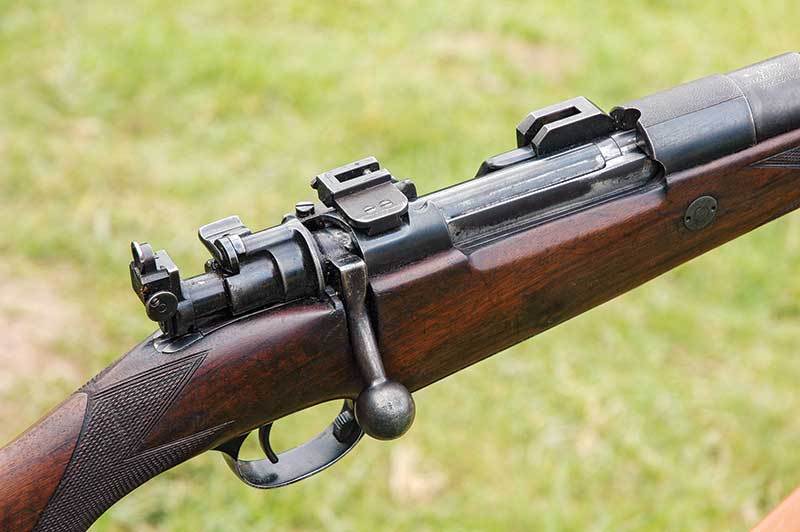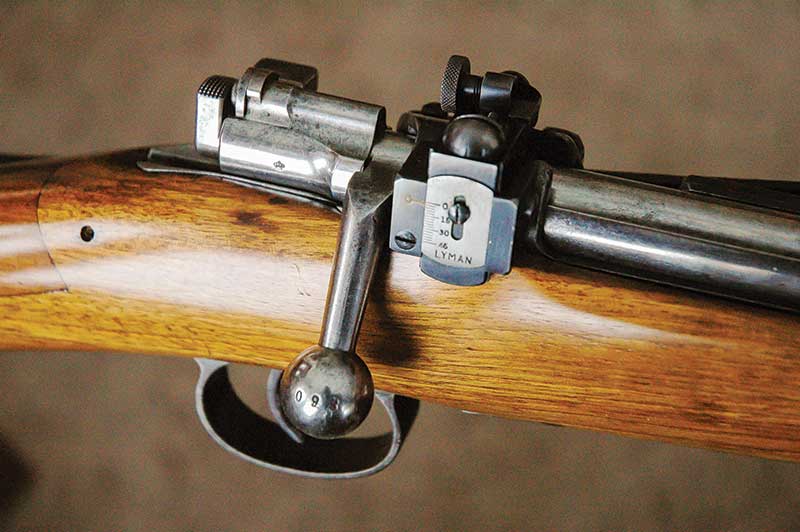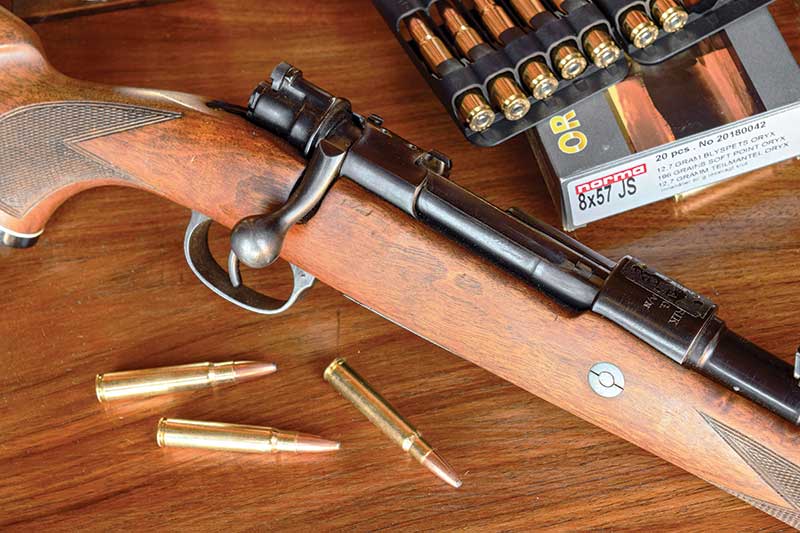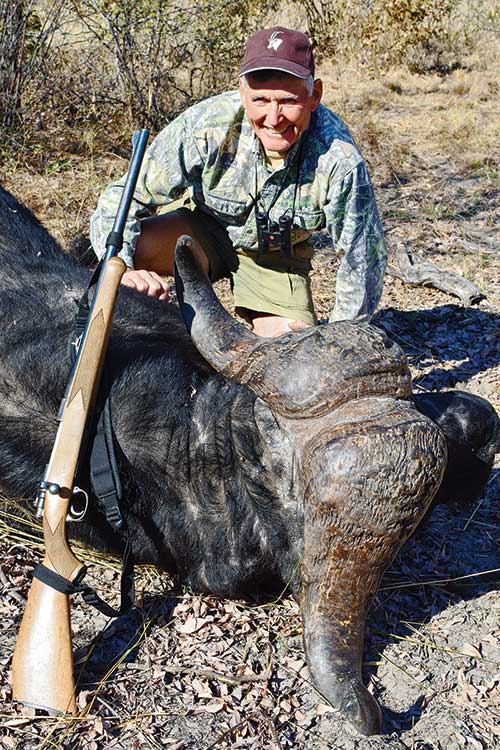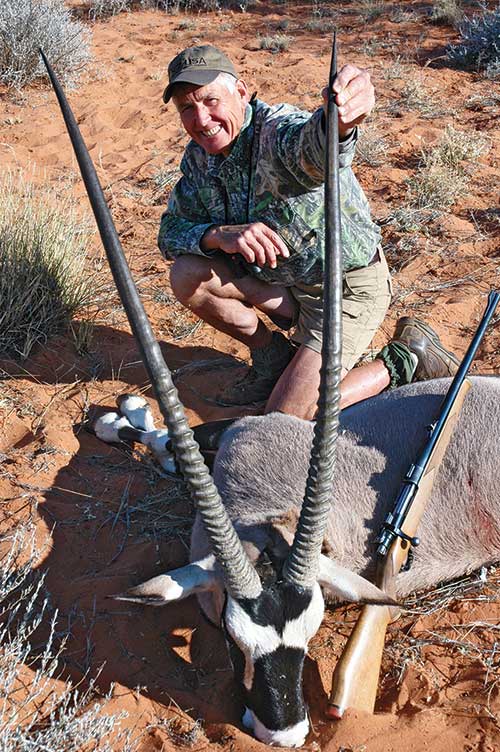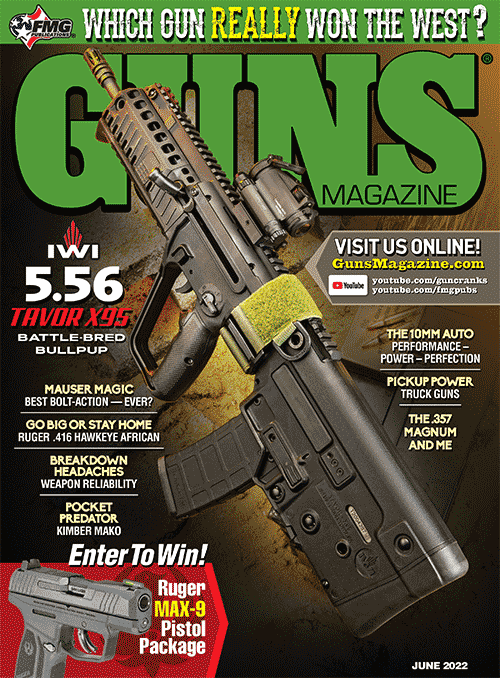The Mauser Magic
Best Bolt-Action Ever?
The Mauser name has graced many rifles and been used to sell others. Oddly enough, the Model of 1898, which brought Peter Paul Mauser acclaim, didn’t emerge until he was 60 years old!
In The Beginning
Together with his brother Wilhelm in Oberndorf, Germany, Paul’s mechanical genius birthed a single-shot rifle firing an 11mm (0.43″) black-powder cartridge hurling 385-grain bullets at 1,400 fps. Wilhelm’s business acumen brought it to military trials. In 1872 the Mauser Model of 1871 became Prussia’s infantry rifle. Alas, the brothers pocketed just 15% of what they’d expected and the new rifles were to be built in government arsenals, not at the Mauser shop. Undaunted, Paul and Wilhelm earned enough making sights to build a factory.
Eventually awarded a contract for 100,000 rifles, they partnered with the Wuerttemberg Vereinsbank of Stuttgart to buy the Wuerttemberg Royal Armory. On February 5, 1874 it became Mauser Bros. & Co. The firm delivered the last Model 1871s ahead of schedule in 1878. After Wilhelm died young in 1882, Paul designed a nine-shot tube magazine for the 1871 rifle. Reliable but crude, the 71/84 soon gave way to better Mausers.
In 1889 Fabrique Nationale d’Armes de Guerre (FN) emerged in Liege to build Mauser rifles for the Belgian government. Paul’s first successful smokeless arm, the Model of 1889, established him as the Continent’s dominant gun designer. The one-piece bolt, bored from the rear, had twin front lugs and the box could be loaded by a stripper clip. Still, the 1889 (and 1890 Turkish and 1891 Argentine Mausers, all bored for the 7.65×53 Mauser) had flaws. The narrow extractor and its small spring could fail. The trigger could be pulled with the bolt out of battery.
Model 1892
The subsequent Model of 1892 had Mauser’s long, non-rotating extractor, now hailed as the most reliable claw ever. Collared to the bolt body, it gripped the rising cartridge before it aligned with the bore, and cleared the breech even if shooters short-cycled. Engaging a big chunk of the case rim, it tugged hulls from hot, dirty chambers. The 1892 had a fixed, single-stack magazine which, like the 1889’s different box, protruded from the rifle’s belly. A sear pin nixed firing until the bolt was locked. A guide rib smoothed its travel. The rifle chambered the new 7×57 cartridge, a standout among early smokeless, rimless rounds.
Barely a year passed before Paul refined his rifle. The safety became a wing pivoting atop the bolt sleeve. At “right horizontal,” it locked bolt and striker. Vertical, it held the cocking piece off the sear but allowed bolt cycling. “Left horizontal” was the fire position. Dual humps on the trigger yielded a two-stage pull. Cartridges fed in a staggered column from a flush box. The resulting 1893 “Spanish Mauser” was an instant hit, snapped up by armed forces worldwide. Its flat-bottomed receiver was machined from a steel forging. An angled cut in the bridge had a camming surface to help with primary extraction. The integral bolt handles on most 1893 (and 1895) Mausers were straight. Carbines had turned-down handles.
In 1894 Sweden ordered 12,185 Mauser carbines, later built in Carl Gustaf’s Stads Gevarsfaktori government arsenal in Eskiltuna. They chambered the 6.5×55 Swedish round, its head slightly larger than that of the 7×57. The checkered cocking piece enabled a soldier to ease the striker forward without firing. The 1896 Swedish Mauser was similar, but with a straight bolt handle and three gas vents in the bolt.
The Ultimate
Mauser actions evolved during the 1890s. The Model of 1898 was adopted by the German Army on April 5 of that year. It cocked on opening. Generous gas ports and a third lug mating with a slot in the bridge were safety measures. Exported to many countries, the ’98 was built in many more. France, Great Britain, Russia and the U.S. designed their own battle rifles but none surpassed Mauser’s in accuracy or function. The original Gewehr 98, a 9-lb. rifle with a 29″ barrel and five-shot magazine, first saw action in the Boxer Rebellion in 1898. A short Karabiner 98 was built from 1899 to 1908.
Paul Mauser died in May, 1914, just before trench warfare muddied and bloodied his 1898 rifles.
While the 98’s most lauded feature is its extractor, the magazine merits equal credit for smooth, fault-free cycling. Each 1898 box was fashioned for a specific cartridge, not to accommodate families of cartridges, as is done today. Besides cartridge length and base width, “Paul Mauser minded the details,” said gun-maker D’Arcy Echols, who has designed his own rifle action. “Not just box dimensions, but the angle formed by the staggered cartridge bases, taper of the box relative to cartridge shape and shoulder location, the follower’s taper and step height. Even the loose fit of the follower spring to the floorplate is purposeful; that spring must squirm to keep the stack centered as cartridges strip from either side.”
Paul Mauser designed his magazine box as a unit integral with the trigger bow, held to the action by a pair of machine screws. Depressing a spring-loaded plunger with a pointed bullet let the floorplate slide back and down, for removal.
Sporting Afield
I’ve used Mausers on animals from deer to elephant, without a feeding failure. Last fall, slipping up on an ancient Cape buffalo, I sent a 286-grain softnose from my open-sighted 9.3×62. The bull roared and spun wildly, no doubt seeking the source of its shattered shoulder. The Mauser seemed to cycle itself, once, twice, hurling follow-up solids. The beast collapsed not 20 steps from where it had taken the first hit.
Even when second shots aren’t needed, I prefer iron-sighted Mausers in Africa. They’re surely at home in Namibia — once a German colony as Southwest Africa. The 9.3, borrowed from PH Jamy Traut, has accounted for my best gemsbok and other game. A Mauser in 8×57 has racked up several one-shot kills. A Holland & Holland .375 on a Magnum Mauser action capped a kudu hunt with a fast last-evening shot. While Winchester Model 70s have also brought my safaris to successful ends, the 70 is a latecomer to Africa, introduced nearly 40 years after Boers (farmers) were downing game with Mausers!
On the heels of WWII, the Mauser Waffenfabrik (arms factory) was renamed Werke (works), and marketing shifted toward sportsmen. U.S. agent A.F. Stoeger, Inc. of New York, which peddled the brand stateside, had earlier assigned numbers to Mauser actions. The line comprised 20 configurations in four lengths: magnum, standard, intermediate, short. The short (kurz) receiver had a small ring. It was factory-barreled for the 6.5×50, 8×51 and .250 Savage. Magnum and short actions saw no military service.
After both world wars, surplus German infantry rifles could be had on the cheap. Enthusiasts sifted details to assess various Mausers for costly conversions to sporters. The 1909 Argentine and Czech VZ-24 and 33/40, for example, became ever more costly as supplies dwindled. Beyond design disparities, teasing out differences in vintage, manufacture and scarcity pull you into deep rabbit holes!
A Costly Habit
Commercial pre-war 98s came dear even when new. In 1939 a Model 70 Winchester cost $61.25; a 98 Mauser brought $110 to $250, square-bridge and left-hand actions adding stiff premiums. Mausers stocked by shops like Griffin & Howe of New York came to define the “classic” sporting rifle stateside. Fitted with Noske and Lyman scopes in G&H double-lever mounts, they seduced discriminating hunters with thick wallets.
In my youth, the Mark X was an affordable entry into the world of Mausers. I had one barreled to the then-new .264 Winchester Magnum. I should have bought a Whitworth big-bore rifle, which also had a Mark X action. Not as beautifully finished as Browning’s High Power rifles built on FN Mauser actions from 1960 to 1974, the Whitworth pointed and shot well.
Another bargain of the day was the Herter’s J9 action, a 98 Mauser with side safety and scope-friendly bolt shank. It listed for as little as $46.95 the year before I graduated high school. Herter’s peddled J9 rifles for $79.50! Add $2.20 for iron sights. Mausers have sold under Zastava, Santa Barbara, Global Trading, Centurion, Mitchell’s, Ackley and other labels.
Several carriage-class shops have since offered Mauser actions and rifles, their prices reflecting the high cost of refining military actions or using commercial versions like the Brevex, a true Magnum Mauser once imported by Tradewinds. Johannsen Express Rifles are Mausers at heart. Granite Mountain Arms produces beautiful CNC-machined Mauser actions. Mauser has long provided Rigby, of London, with actions for its exquisite rifles. This relationship has endured even the barbs of war!
The proletariat can still find serviceable Mausers — commercial and “sporterized” infantry arms. Once, in a used-gun rack, I spied an 1896 Swedish Mauser fitted with a hunting-style receiver sight. The stock had been nicely refinished, a block inletted where the open sight had been, and I killed a pronghorn with the 6.5×55. A re-barreled 98 in a Winchester 54 stock caught my eye at a gun show and followed me home. It is lightweight, nimble. Uncannily and unfailingly, it centers my eye in the aperture.
Those aren’t the only Mausers in my rack. Nor are they likely to be the last.

